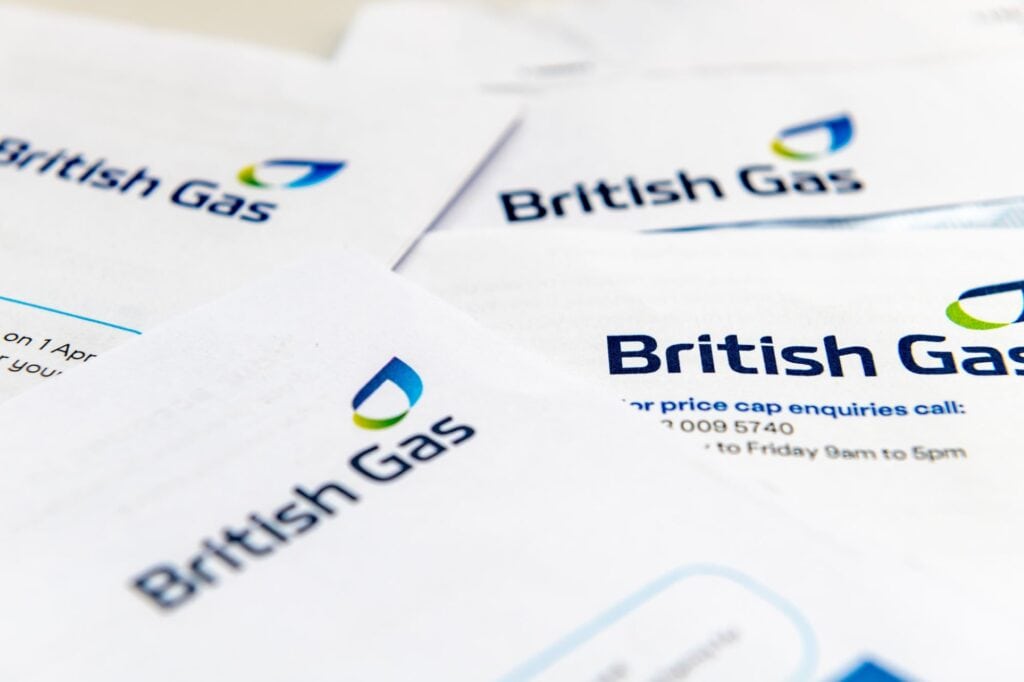If you’re wondering how to handle ‘changing address and updating utilities after moving’, look no further. This article cuts through the confusion to bring you a straightforward action plan for a hassle-free update to your essential services. Dive into practical steps for sorting out electricity, gas, water, and internet connectivity, and sidestep the potential missteps in billing and service continuation at your new home.
Key Takeaways
- Planning and early coordination with utility companies are crucial for a smooth transition to a new home, including organising bills, starting the transfer process, and avoiding potential issues.
- Contacting energy providers before moving and providing accurate final meter readings ensures you only pay for what you use, and updating all utility companies with your new address prevents billing and service errors.
- Establishing utility services in a new home should include securing gas and electricity arrangements, comparing energy deals, updating broadband and council tax records, and ensuring continuous utility supply with preferences set for billing methods.
Navigating Your Utility Transfer: The First Steps
Mapping out a well-timed strategy for transferring utilities is the start of a smooth transition to your new home. It’s not just about flipping a switch; it’s about ensuring that the essentials – light, warmth, and connectivity – are waiting to greet you as you cross the threshold. Starting early is the key to unlocking a stress-free move. Planning ahead allows for ample time to liaise with utility companies, manage necessary paperwork, and ensure a seamless handover of services.
Embarking on this journey requires coordination and attention to detail. From the moment you confirm your moving date, a countdown begins. Each tick of the clock is a reminder to check tasks off your list, including the need to transfer utilities. Here are some important steps to take:
- Make sure your utility bills are in order.
- Kickstart the process to switch utilities.
- Proactively tackle any potential hurdles that might hamper the excitement of your move.
Contacting Your Energy Provider

There’s an art to signing off from your current abode’s energy supply with grace. Here are some steps to follow:
- Reach out to your energy supplier as soon as your move becomes more than just a thought.
- Mark your calendar to inform them at least two weeks before you bid farewell to your old home in Harrow.
- Remember, you can provide meter readings for your gas and electricity up to 90 days after the move.
- It’s like leaving a note for the next occupant, ensuring they pay only for the energy they use.
On a moving day, amidst the whirlwind of boxes and farewells, take a moment for a final meter reading ritual. This act is not merely procedural; it’s the closing of a chapter, the last detail ensuring that your energy bills reflect your tenure – and no one else’s. Contacting your provider punctually and providing accurate readings are the brushstrokes that paint a picture of a well-managed energy transition.
Address Checklist for Utility Companies
Don’t underestimate the importance of updating your address with utility companies. It’s a cornerstone of the moving process, a foundation on which the reliability of your service and the accuracy of your billing rest. Begin with your water supplier, ensuring that the flow of H2O to your new abode is uninterrupted. Then, systematically work your way through your list, which should include:
- electric
- gas
- Internet service providers
- any other utilities that make your house a home
The devil is in the details, and it’s worth checking twice – or even thrice – that every provider has been contacted with your forwarding address. Imagine the sense of completion as you tick off each name, knowing that you’ve paved the way for a smooth service continuation. Address updating goes beyond the mundane; it facilitates a hassle-free transition to your new adventure.
Securing Your New Home’s Gas and Electricity
As you step over the threshold of your new property, the assurance that the lights will turn on and the hearth will glow is paramount. For peace of mind, prioritise contacting the current energy supplier to establish a new account. This simple step can prevent you from being charged for the previous occupant’s energy usage. If you’re the first to tread the floors of a newly built home, your quest begins with locating the meters and identifying the supplier.
A smart move for anyone moving into a property with a prepayment meter is to connect with the supplier posthaste. This ensures any outstanding debts are settled, and you’re equipped with the key or card needed for your energy top-ups. Should a smart meter grace your new home, verifying its ‘smart mode’ setting will ensure you benefit from automatic meter readings.
RECOMMENDATION
Remember to note the meter readings on moving day. It will protect you from charges for energy used before your arrival.
Snagging a Better Deal on Energy Bills
A new house offers a unique chance to reevaluate your energy costs and possibly secure a better deal on your gas and electricity bills. Take the time to compare your current energy tariff with the offerings available in your new abode. Look beyond the numbers; consider customer service, green energy options, and any enticing incentives for switching providers. Should you decide to change your allegiance, the Energy Switch Guarantee is your ally, promising a seamless transition to your chosen energy provider within five working days.
However, before you leap towards a new electricity deal, weigh the possibility of an exit fee from your current fixed tariff. Such fees may tip the scales when considering the overall financial benefit of a switch. Take this moment of change to reflect on your energy needs and make a choice that could save money and align with your values, even if the current market offers fewer deals to choose from.
Essential Utilities: Beyond Gas and Electricity
The tapestry of modern home life is woven with more than just gas and electricity; it includes the vital threads of water and broadband. In the UK, the water supplier is predetermined by your new location, so acquainting yourself with the designated company is essential. Start your water service on the right foot by locating your meter and delivering a precise reading to your company. And while you’re at it, determine whether your sewerage services are managed by the same entity or a separate company, as it affects your billing.
Broadband, indispensable in the digital age, deserves as much attention. Some new developments may tie you to exclusive providers, while others leave the field open for you to choose. Investigate the broadband speeds available at your new address, and remember to include phone and broadband services in your utility updates. It’s not just a mere technicality; it’s about making sure your new home is fully equipped to meet your contemporary needs.
Finalising Your Old Home’s Utility Accounts
Shutting the door on your old Harrow home’s utility accounts requires a final act of due diligence. Here are the steps to follow:
- Notify your energy supplier of your impending departure at least 48 hours in advance.
- Provide them with your new address to ensure the final bill finds its way to you.
- When it’s time to pass on responsibility for your previous home, provide your supplier with the final meter reading, the final piece that prevents any overcharges.
In the rare event that the chaos of moving day prevents you from taking that final reading, you have a five-day grace period to submit it, sparing you from the guesswork of an estimated bill. As you settle into your new home, keep an eye out for the final bill or a potential refund from your utility services, a financial echo of your time spent at the previous residence.
Avoiding Overlaps in Utility Payments
Transitioning between homes doesn’t have to mean juggling two sets of utility bills. To sidestep this financial faux pas, mark your calendar three weeks before the move to update your utility providers. A single service that notifies all institutions of your move could be the orchestrator of a harmonious switch, reducing the risk of any payment overlaps. However, be prepared for the possibility of a one-off double payment to your new energy supplier due to billing cycles during the move’s month.
It’s also worth noting that if you’re moving out of a property with a prepayment or smart Pay As You Go meter, the final reading isn’t necessary. Your account is cleared as you go, simplifying your move-out process. By taking these steps, you can stride confidently into your new home, free from the worry of paying for utilities you no longer use.
Updating Local Authority Records for Council Tax
As you navigate the myriad tasks of moving home, let’s not forget the civic duty of updating your council tax records. Embarking on this process is straightforward: reach out to your local council to establish a new Council Tax account and inform your previous council of your departure. It’s more than a mere formality; it’s a significant step towards integrating into your new community and ensuring tax-funded services remain uninterrupted.
Local authorities manage the registration and billing for Council Tax, and they will provide you with the necessary instructions for payment. By updating your address for Council Tax in a timely manner, you’re not only abiding by legal requirements but also paving the way for smooth municipal interactions in your new locale.
Transferring Broadband and Other Services

In the age of connectivity, ensuring your broadband service follows you to your new house is as essential as the physical move itself. To facilitate a smooth transition, coordinate with your broadband provider well in advance and confirm the availability of services at your new address. Numerous providers offer dedicated home move services to facilitate the shift, ensuring your online presence stays uninterrupted.
But as you prepare for moving house, consider this an opportune moment to audit your broadband service. Could a new provider offer a more attractive package or better connectivity? Keep in mind that terminating your broadband contract prematurely may incur fees, so it’s crucial to be aware of the terms and conditions and any notice periods required. As you update your contact details with your provider, you’ll want to ensure that you’re kept in the loop about every step of your transfer process.
Reviewing Your Broadband Contract
Your move presents a prime opportunity to review your broadband contract. Are you nearing the end of your existing contract, or would switching now lead to early termination fees? This is the time to explore new deals and renegotiate terms, potentially leading to savings and improved service. If you’re within the minimum term of your contract, be mindful of penalty fees for early cancellation.
Coordinating the end of your current contract with your house move can be a strategic play for seamless service and better financial terms with a new provider. It’s a dance of timing and negotiation, where the right steps can lead to a triumphant entry into your new home, complete with a broadband setup that matches your lifestyle and budget.
Settling Into Your New Property: Post-Move Utility Checklist
The dust has settled, and your new house begins to feel like a home. Now, it’s time to ensure that essential utilities like gas, electricity, and water are up and running smoothly. Setting up billing and payment methods for these services, as well as for your broadband, is the next step on the checklist for a fully functional abode. It goes beyond ticking boxes; it’s about creating a comfortable haven for your family.
With the logistics out of the way, you can finally relax and enjoy your new surroundings. But remember, the beauty of a home lies not just in its physical structure but in the invisible threads of utility services that make daily life possible. It’s in the warmth of the heater, the glow of the lights, and the flow of water that the essence of your new home truly comes to life.
Ensuring Continuous Energy Supply
Your new home’s energy supply is a lifeline that deserves immediate attention. Identifying the energy supplier and establishing your presence is your first step in this domain. If you find yourself within a vulnerable group – over state pension age, disabled, or suffering from a chronic illness – inform your energy provider to be placed on the priority services register. It goes beyond being a formality; it’s about guaranteeing your safety and comfort in your new setting.
Consider replacing a prepayment meter with a smart meter in credit mode …
Consider replacing a prepayment meter with a smart meter in credit mode if you come across one. This can help provide more convenience and flexibility in managing your energy consumption. This upgrade allows you to pay for energy post-usage, eliminating the routine of top-ups. And if a smart meter is already installed, make sure it’s functioning in ‘smart mode’ for hassle-free automatic meter readings. These proactive steps pave the way for an uninterrupted energy supply, allowing you to focus on the joy of your new beginning.
Direct Debit and Billing Preferences
Choosing Direct Debit as your payment method for utility bills is like setting a course on autopilot; it’s convenient and ensures timely payments without a second thought. When the first bill arrives at your new home, expect to see setup or connection fees alongside the usual charges for usage. This bill isn’t just another piece of mail – it signifies the beginning of your new journey, and it’s crucial to scrutinise it for accuracy.
While utility billing cycles may vary, you’ll generally receive your first bill within one to two months of service activation. This initial statement is your chance to set preferences for future billing and confirm that all the details are correct. It’s a testament to your organizational prowess and a reminder that you’re in control of your new home’s utilities.
Summary
As we wrap up this guide, remember that the key to a stress-free move lies in meticulous planning and timely action. From contacting your energy provider to securing the best broadband deal, and from finalising your old utility accounts to updating your council tax, each step is crucial in ensuring a smooth transition into your new home. Embrace the process, and soon you’ll be settled in, with the hum of your utilities working in harmony, a silent symphony that turns a house into a home. Let this guide be your compass, navigating you through the logistics of moving so that you can focus on the excitement of your new beginning.
Frequently Asked Questions
When should I inform my energy provider that I’m moving?
You should inform your energy provider about your move date up to 14 days before moving, but meter readings can be submitted up to 90 days after moving. It’s important to notify them in advance to ensure a smooth transition.
What happens if I don’t provide a final meter reading on the day I move out?
If you don’t provide a final meter reading on the day you move out, you have an additional five days to submit it; otherwise, your energy supplier will issue an estimated bill. It’s important to ensure you provide the reading within the given timeframe to avoid estimated billing.
Can I switch my energy provider when I move house?
Yes, you can switch your energy provider when you move house. Just be sure to check for any exit fees if you’re on a fixed-term tariff.
How do I update my council tax information after moving?
To update your council tax information after moving, contact your local council to set up a new account and inform them of your move. They will provide you with instructions for payment.
What should I consider when transferring broadband services to my new home?
When transferring broadband services to a new home, consider checking service availability, early termination fees, notice periods, and the quality of customer service from potential new providers. This will ensure a smooth transition and help you choose the best option for your new home.







